How much does it cost to enter Angkor Wat?
June 19, 2023
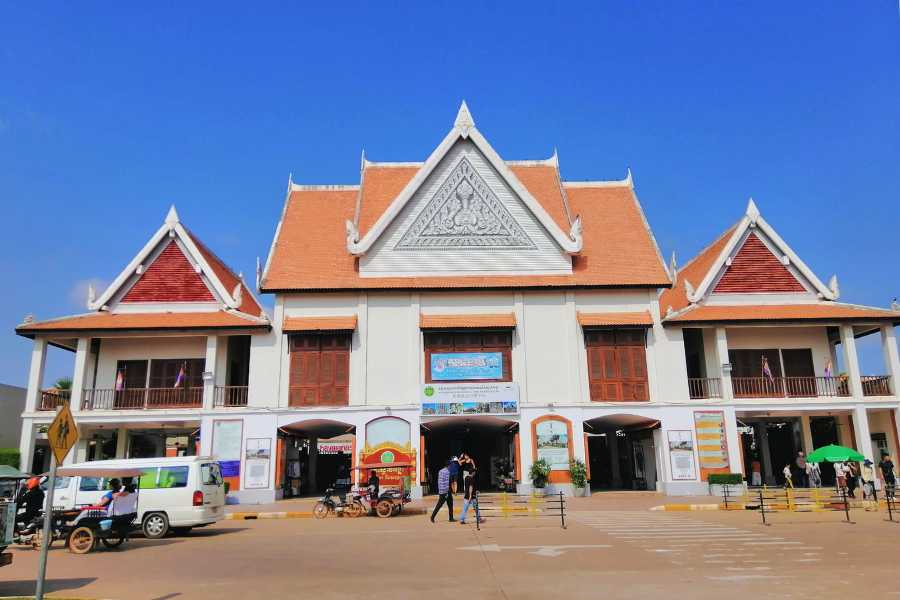
Table of Contents
How much does it cost to enter Angkor Wat?
Angkor Wat Entry Fees: Unraveling the Myth
Entrance fee for Angkor Wat
Angkor Wat’s entrance fee can be daunting. Here’s the lowdown on what you’ll need to pay.
A one-day pass costs $37. A three-day pass is $62 while a seven-day pass is $72. Not only do these prices provide access to Angkor Wat, but also to other temples within the Angkor Archaeological Park such as Bayon, Ta Prohm, and Banteay Srei.
You’ll need to get your photo taken too. This will be printed on your pass and checked at various points within the park.
Did you know that Angkor Wat used to be free? But in 1996, due to concerns over preservation and sustainability, they introduced an entrance fee. This has allowed for ongoing conservation efforts and protection of Angkor Wat and its surrounding temples.
Visiting Angkor Wat is a unique experience, and understanding its entrance fee adds another layer of appreciation for this ancient wonder.
Cost for a single-day pass
The average cost to obtain a single-day pass for entry into Angkor Wat varies depending on the type of pass. The rates are as follows:
- For foreign visitors, the cost for a single-day pass is $37.
- For Cambodian citizens, the cost for a single-day pass is 2,000 Cambodian Riels.
- For children under the age of twelve, entry into Angkor Wat is free of charge.
It is worth noting that the prices mentioned above may be subject to change, so it is always advisable to check the most up-to-date information before planning a visit to Angkor Wat.
One interesting fact about Angkor Wat and its entry fees is that the revenue generated from ticket sales plays a crucial role in the maintenance and preservation of the temple complex.
I wandered through the temple complex, reminiscing about a time when all-you-can-eat buffet meant something more literal than just exploring Angkor Wat.
Exploring the main temple complex
The main temple complex is an inviting place full of grandeur and an uplifting atmosphere. When you enter, you are taken to a realm of peace and beauty.
The architecture is a work of art created centuries ago. Its tall spires, with their carvings and sculptures, reach to the sky, creating a stunning view.
You can discover numerous shrines dedicated to different gods. Each has its own story that reflects the culture of the place.
One shrine stands out – it is devoted to the goddess of prosperity. It is said that sincere prayers are rewarded with abundance. Many have reported amazing fortune after visiting this shrine.
Visiting the main temple complex is not only about admiring its architecture, but also a chance for spiritual introspection. The peaceful chants create an atmosphere that refreshes your mind and brings inner peace.
Exploring other temples within the Angkor Archaeological Park is like a journey with surprises. But instead of dragons, there are old ruins!
-
Angkor Wat Tours
Explore Angkor with Bayon Temple and the world-famous Ta Prohm (Tomb Raider) Temple
20$ Add to cartRated 0 out of 5
Visiting other temples within the Angkor Archaeological Park
Exploring the majestic temples of the Angkor Archaeological Park is something not to be missed! When planning your visit, keep these key points in mind:
- Plan your itinerary
- Look into transportation options
- Make sure to check out sunrise and sunset views from the more popular spots like Angkor Wat and Pre Rup
Be sure to abide by all the rules and regulations of the park, and don’t forget to bring a good pair of shoes, snacks, and water – you’ll be walking for hours!
By following these tips, you’ll make the most of your visit and create long-lasting memories – just be aware of the cost as the longer you stay, the more it’ll cost you!
Cost for a multi-day pass
Angkor Wat is a famous temple complex in Cambodia that offers multi-day passes for visitors. These passes allow tourists to explore the site at their own pace and truly immerse themselves in its beauty.
Here is a breakdown of the cost for a multi-day pass:
| Pass Duration | Fee |
| 1-day | $37 |
| 3-day | $62 |
| 7-day | $72 |
These fees are valid for foreign visitors, and there are no discounts for students or seniors. It is important to note that the passes are non-transferable and non-refundable. Additionally, each pass comes with a personal photo taken at the ticket counter to ensure its validity throughout the visit.
As for the unique details, it is worth mentioning that the temple complex spans over 400 square kilometers and features various structures, including the iconic Angkor Wat temple itself. Exploring this vast area can take several days, hence the availability of multi-day passes.
A true fact about the cost of entering Angkor Wat is that the revenue generated from ticket sales is used for the preservation and conservation of the site. This information comes from the official website of the Angkor Archaeological Park.
Thinking about getting a 3-day or 7-day pass to Angkor Wat? Just remember, the longer you stay, the higher the chance of becoming a permanent resident!
Options for 3-day and 7-day passes
Multi-day passes offer convenient cost savings. Enjoy flexibility and ease of access while you explore your chosen destination.
These passes grant access to iconic monuments, museums, cultural events, guided tours, transportation, and dining discounts.
Live in the lap of luxury with a multi-day ticket. Feel the thrill of being a VIP as you flash your pass around!
Benefits of a multi-day pass for a more comprehensive visit
A multi-day pass can be a great way to explore a destination! It offers cost savings, flexibility, priority access, variety and convenience. Plus, some passes come with exclusive offers. Here are the perks:
- Cost Savings: Buy a pass that covers multiple days instead of individual tickets!
- Flexibility: You can plan your own itinerary and visit different attractions on different days.
- Priority Access: Skip the long lines and make the most out of your time.
- Variety of Attractions: From museums to theme parks, there’s something for everyone.
- Convenience: No need to carry around multiple tickets or constantly buy new ones.
- Exclusive Offers: Enjoy discounts on dining, shopping, or special events.
To make the most of your multi-day pass, here are some tips:
- Plan Ahead: Research and prioritize the attractions you want to see.
- Create an Itinerary: Include opening and closing times of each place.
- Use Priority Access Wisely: Skip long lines at popular attractions but visit less crowded places during peak times.
- Explore Beyond Famous Attractions: Discover hidden gems and off-the-beaten-path locations.
Follow these suggestions and you can enjoy the benefits of a multi-day pass while having a comprehensive and rewarding vacation.
But watch out for the hidden expenses!
Additional expenses to consider
Although the entry fee for Angkor Wat is a significant expense, there are additional costs that visitors should consider. These expenses may vary depending on personal preferences and circumstances.
- Transportation: Depending on where visitors are staying, transportation costs to reach Angkor Wat can add up. This could include hiring a tuk-tuk or a private taxi.
- Accommodation: It is important to factor in the cost of accommodation while visiting Angkor Wat. There are various options available, ranging from budget guesthouses to luxury resorts.
- Food and Drinks: Visitors will need to budget for meals during their visit to Angkor Wat. There are restaurants and food stalls available in the temple complex, as well as options in nearby towns.
- Tour Guides: Hiring a tour guide can be an additional expense but can greatly enhance the experience by providing historical and cultural insights.
- Souvenirs and Gifts: It is common for visitors to shop for souvenirs or buy gifts for loved ones back home. Setting aside a budget for these purchases is advisable.
- Additional Attractions: Apart from Angkor Wat, there are other temples and attractions in the Angkor Archaeological Park. These sites may have separate entrance fees, so visitors should consider their interest in exploring beyond the main temple.
In addition to considering these expenses, it’s important to note that Angkor Wat has strict regulations regarding dress code and behavior. Being aware of and respecting these guidelines will ensure a smoother and more enjoyable visit.
Pro Tip: It is advisable to carry enough cash in local currency as some places may not accept credit cards.
Getting to Angkor Wat is easy, unless you accidentally book a ride on the tuk-tuk equivalent of Mr. Bean’s car.
Transportation to and from Angkor Wat
Exploring Angkor Wat includes various transportation options. Hiring a tuk-tuk is popular. It’s a motorized rickshaw that fits up to four people. They are common in Siem Reap and make for an open-air experience.
Renting a bicycle is another option. It’s eco-friendly and lets you experience the surroundings at your own pace. Cycling around Angkor Wat can be an enchanting experience.
For luxury, private taxis and car rental services are available. They provide air-conditioned vehicles with drivers. It’s wise to negotiate prices and duration before visiting. This ensures a seamless and enjoyable trip.
Why pay for a local guide? Getting lost and discovering a hidden cemetery can be just as enriching (and spooky)!
Hiring a local guide for a more enriching experience
Ready to take your travel experience to the next level? Consider hiring a local guide! Professional guides have an abundance of knowledge on the local culture, history, and hidden gems that you’d miss out on without them.
Learn all about the destination’s heritage with fascinating stories and anecdotes that bring it alive. Plus, they’re invaluable resources when navigating unfamiliar territories – they know the best routes, transportation options, and even the tastiest local cuisine.
Take it from me – I hired a guide called Rajesh in India and he showed me temples and connected me with locals. I was able to experience the hospitality of the community and discover unique handicrafts made by artisans.
So don’t miss out on these special moments – hire a knowledgeable guide and get the most out of your time in a new place. Let the memories begin!
Optional activities and attractions in the surrounding area
Are you looking for extra adventure? Try out these optional activities and attractions!
- Take a hike in the mountains and explore the natural beauty.
- Get an adrenaline rush on a zip-lining tour!
- Enjoy a peaceful afternoon of fishing at a serene lake.
Discover hidden trails with amazing views or encounter rare wildlife species! Here’s a story to show you what can be found: A visitor took a tour through a cave and found mesmerizing formations underground. It was an unforgettable experience!
There’s so much to explore here. These optional activities and attractions will give you amazing memories.
Rules and regulations regarding entrance fees
Rules and regulations concerning the fees for entering Angkor Wat are as follows:
| Entrance Type | Fee (USD) | Duration |
| 1-day | 37 | 24 hours |
| 3-day | 62 | 10 days |
| 7-day | 72 | 1 month |
In addition to the entrance fees, it is worth noting that visitors are required to follow certain guidelines. For example, appropriate attire, such as covering the shoulders and knees, is mandatory while visiting the temples. Furthermore, it is important to carry the admission pass at all times as it may be checked throughout the site.
Pro Tip: Arriving early in the morning or during the late afternoon can provide a more serene and less crowded experience while exploring Angkor Wat.
Unlocking the secrets of ancient temples comes with a price tag – luckily, not as hefty as the curse that follows if you try to sneak in without paying.
Validity period and restrictions for different passes
Different passes come with their own validity periods and restrictions that visitors must know. These guidelines make sure everyone has a great experience. Here’s an overview:
| Pass Type | Validity Period | Restrictions |
|---|---|---|
| 1-Day Pass | 24 hours from purchase | Only one day usage |
| Weekend Pass | Valid Friday-Sunday | Not valid weekdays |
| Monthly Pass | 30 consecutive days | No restrictions |
| Annual Pass | Valid one year from date | Unlimited entry |
Be sure to read all the terms and conditions before buying a pass. Blackout dates during busy seasons or holidays might exist, to manage crowd control and make sure visitors have a good experience.
Did you know passes first originated in ancient times? Only those with high social rank had them. Eventually, passes became available to the public. Now, everyone can get them.
Ticketing process and locations
Ticketing and entrance fees are major parts of any establishment. To give visitors a smooth experience, planning and placing ticket counters is key. Here’s a 6-step guide to help you:
- Differentiate between online and on-site purchases.
- Show where visitors can buy tickets.
- Display signs to lead visitors to the ticket counter.
- Assign staff members to assist with ticket purchases.
- Give multiple payment methods, like cash or card.
- Have an orderly queuing system to cut down waiting times.
Unique details to note about ticketing and locations:
- Put self-service kiosks in for faster ticket buying.
- Have a separate entrance for online-ticket holders to speed up the entry process.
In the past, long queues at ticketing counters caused a lot of trouble. To fix this, establishments started offering online tickets – reducing wait times a lot.
By following these guidelines and regularly improving the ticketing process, establishments can give visitors great experiences and manage entrance fees effectively. Not following these guidelines is like trying to get into a theme park without paying – it’ll end in an unchangeable roller coaster of consequences.
Consequences of not following the guidelines
It’s important to know the consequences of not following guidelines. If entrance fees are not managed properly, there can be hefty punishments. Let’s take a look at what may happen:
| Violation | Possible Penalty |
| Charging higher entrance fees | Fines and legal action |
| No collection of entrance fees | Loss of revenue and funding |
| False info about fee exemptions | Fines, reputation damage, and loss of trust |
These penalties aren’t fun. They’re meant to protect visitors and the institution itself. Charging too much may harm its reputation and lead to legal action.
To avoid this, regularly review and update entrance fee policies. Train staff on fee collection procedures too.
It’s also important to communicate truthfully about fee exemptions. This builds trust and prevents misuse.
By following these tips, institutions can avoid violations, keep finances stable, and give everyone fair access. Finding a discount? Good luck – it’s like finding a unicorn!
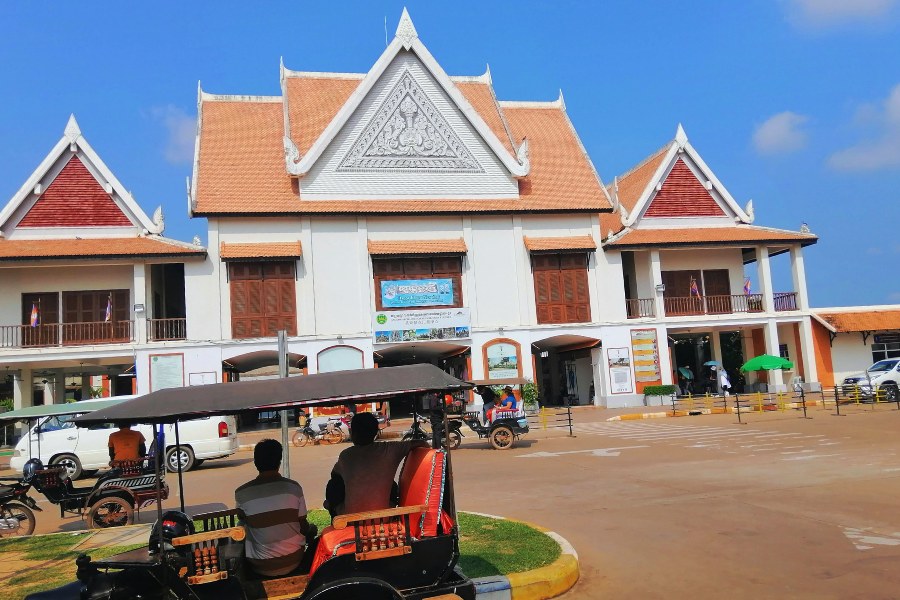
Discounts and promotions available
Discounts and promotions available at Angkor Wat can help visitors save money and enhance their experience. Here are some ways to take advantage of these offers:
- Early bird discount: Visitors who arrive at Angkor Wat in the early morning can enjoy a special discounted rate. This allows them to witness the stunning sunrise over the temples and explore the complex before the crowds arrive.
- Multi-day pass: Instead of purchasing a one-day pass, consider buying a multi-day pass. This option allows visitors to explore the temples at a more leisurely pace and offers greater value for money.
- Group discounts: Traveling with a group? Check if there are any group discounts available. This can be an excellent way to save money, especially for larger groups.
- Seasonal promotions: Keep an eye out for any seasonal promotions or special offers. These can include discounted rates during off-peak months or package deals that combine temple visits with other activities or accommodations.
- Student discounts: Students with a valid ID can often enjoy discounted entry fees. Make sure to bring your student ID and inquire about any available student discounts at the ticket counter.
Additionally, it’s worth noting that the ticket to enter Angkor Wat grants access to other temples in the Angkor Archaeological Park, allowing visitors to explore the rich history and cultural heritage of the region.
To make the most of these discounts and promotions, it is recommended to plan your visit in advance and research the latest offers. By taking advantage of these opportunities, visitors can save money while still enjoying all that Angkor Wat has to offer.
Finally, a perk of being a Cambodian citizen or resident – you get to enter Angkor Wat without breaking the bank, unlike the rest of us poor tourists.
Discounted rates for Cambodian citizens and residents
Cambodian citizens and residents can get discounts for various services. Here are the details:
| Discount | Service | Applicable | Conditions |
|---|---|---|---|
| 30% off | Hotel rooms | Cambodian citizens | Bring your ID! |
| 20% off | Spa treatments | Cambodian citizens and residents |
Cambodian citizens can also get a 10% discount at select restaurants. Remember to ask about promotions to save more money! Why not make every season a holiday with sweet discounts and offers?
Special promotions during certain times of the year
Take advantage of exclusive promotions and discounts throughout the year! We’ve created a table to detail all the offers available. Check it out:
| Promotion | Duration | Discount |
|---|---|---|
| Summer Sale | June 1 – August 31 | Up to 50% off |
| Back-to-School Offer | August 15 – September 15 | 20% off selected items |
| Holiday Season Promotion | November 1 – December 31 | Buy one, get one free |
| New Year’s Clearance Sale | January 1 – January 15 | Additional 30% off clearance items |
Subscribe to our newsletter for more details on upcoming promos. Plus, join our loyalty program and enjoy early access to new products and special discounts!
Don’t miss out on these amazing savings! Visit us today. Time’s running out, so start shopping now and smile from ear to ear with your incredible savings! And if your whole fam joins the vacay, you may even get a group discount!
Group discounts for organized tours or large groups
Group discounts can offer great savings compared to individual tickets, making the tour more affordable. Plus, many providers offer help with planning and organizing the tour.
Exclusive activities are sometimes offered to large groups, such as private guided tours or access to behind-the-scenes areas. It’s worth looking into discounts and promotions that may be available for your particular group.
I recently had a great experience with a group discount. We got a big discount on tickets and our own private guided tour led by a local expert. It was an amazing experience!
If you’ve got a large group of people, explore the possibilities of group discounts. They can save you money and provide unique opportunities and memorable experiences.
Tips for planning a budget-friendly visit to Angkor Wat
Text: Planning a Budget-Friendly Visit to Angkor Wat:
To visit Angkor Wat on a budget, consider the following tips:
- Opt for a One-Day Pass: Rather than purchasing a multi-day pass, a one-day pass is a more cost-effective option for budget travelers.
- Plan Your Visit Strategically: Start your exploration early in the morning to make the most of your day pass. Visit popular temples during off-peak hours to avoid crowds.
- Hire a Tuk-Tuk or Bicycle: Instead of hiring a private car or booking a tour, renting a tuk-tuk or bicycle is a budget-friendly way to move around the temples.
- Bring Your Own Food and Water: To save money on meals, pack your own snacks and drinks. There are picnic areas available where you can enjoy your food while taking a break.
For a budget-friendly visit to Angkor Wat, these tips will help you make the most of your experience without breaking the bank. Prioritize the iconic temples, strategize your visit, and bring your own provisions to minimize expenses.
For more unique details, Angkor Wat offers picturesque sunrise and sunset views, making it truly memorable. Additionally, exploring the lesser-known temples, such as Ta Nei and Ta Prohm, can provide a more intimate and off-the-beaten-path experience.
A noteworthy historic fact is that Angkor Wat was originally built in the 12th century as a Hindu temple dedicated to the god Vishnu. However, it later transformed into a Buddhist temple towards the end of the 12th century under the reign of Jayavarman VII. This historical transition reflects the cultural and religious changes that took place during that era.
Visiting Angkor Wat on a budget doesn’t mean compromising on the experience. With careful planning and consideration, you can enjoy the grandeur of this ancient wonder while keeping your expenses under control.
Why visit Angkor Wat during the rainy season? It’s the perfect opportunity to see ancient temples and aquatic wildlife all in one soggy package.
Choosing the right time of year to visit
Peak Season: November to February – cool and dry, but busy and pricey.
Shoulder Season: March to May, and September to October – nice weather, fewer people.
Rainy Season: June to August – wet, but less crowded and cheaper.
Prioritize: Good weather or fewer tourists?
Flexible Dates: Prices can change based on availability.
Check Festivals: Local events can add culture to your journey.
Early mornings/late afternoons: Less crowded all year round.
Check Details: Angkor Wat has its own seasonal events and maintenance schedules.
Take the plunge and explore Angkor Wat! Plan ahead for a budget-friendly trip. Tuk-tuk rides are the way to go for true adventurers. Get ready – an unforgettable adventure awaits!
Making use of local transportation options
- Tuk-tuks: These 3-wheeled icons provide a fun and flexible way to travel. Beforehand, negotiate prices or use a ride-hailing app for transparency.
- Bicycles: Enjoy scenic routes and explore at your own speed by renting bicycles. Many hostels and guesthouses offer rental services.
- Motorbikes: For the experienced riders, motorbikes can be an efficient option. When renting, check license requirements and wear helmets for safety.
- For added experience, hire a local guide who can provide meaningful insights about Angkor Wat’s temples.
Pro Tip: Clarify prices and additional charges before commencing the journey. Save money and avoid tantrums by packing snacks and water. Paying $10 for a bottle of water should only happen if it magically turns into wine!
Packing snacks and water to avoid overpriced on-site purchases
Pack snacks and water to prevent spending big on on-site purchases. Consider these tips:
- Carry your own snacks and water instead of buying overpriced food and drinks inside Angkor Wat.
- Choose light, portable snacks that take up little space in your bag.
- Don’t bring items that spoil quickly, especially if you are exploring the temple for a long time.
- Bring snacks that give you energy for walking and hiking, such as granola bars or trail mix.
- Bring a reusable bottle to stay hydrated. Avoid buying bottled water.
- For cold drinks, bring an insulated flask with ice cubes or freeze your water bottle.
Remember, some areas of Angkor Wat have limited or no food options. Packing snacks ensures you don’t go hungry. Be prepared and bring snacks and water for a budget-friendly trip!
Prioritizing must-see attractions to avoid unnecessary expenses
Prioritize must-see attractions to stay on budget while visiting Angkor Wat. Here are tips to make the most of your time and money:
- Start with Angkor Wat temple. It’s grand and has historical significance. Must-visit!
- Next, go to Bayon temple. It has mesmerizing stone faces and offers a different perspective on Khmer architecture and history.
- Explore Ta Prohm temple. It’s famous for “Tomb Raider” and has tangled tree roots and crumbling walls for a mystical atmosphere.
- Lastly, visit Banteay Srei temple. Even though it’s further away, it has intricate carvings and a pink sandstone façade making it worth discovering.
For a budget-friendly visit to Angkor Wat, follow these suggestions:
- Avoid peak hours or choose less popular times. Avoid crowds and have more time to appreciate the sites.
- Bring your own snacks and water bottles. Save money and stay hydrated and energized throughout the day.
- Hire a local guide. They can provide insights into the history and culture of each site and help navigate efficiently.
By prioritizing must-see attractions and following these suggestions, you can have an enriching experience at Angkor Wat without unnecessary expenses. Remember, laughter is always free!
Conclusion
A trip to Angkor Wat can be a mind-blowing and enigmatic journey. While the entry fee might appear high at first, it is certainly worth the investment. Exploring the ancient ruins and being in awe of their intricate architecture is an experience like no other.
There are various ticket choices for visitors to Angkor Wat. The most common is the one-day pass, costing $37. This allows you to explore the main temple complex and some surrounding areas. For those seeking a more comprehensive experience, there is a three-day pass at $62, and a seven-day pass at $72.
The ticket prices may seem high, however, they are justified by the preservation and maintenance efforts invested in preserving this UNESCO World Heritage site. The money generated from ticket sales is used to fund conservation projects and guarantee that future generations can continue to relish the beauty of Angkor Wat.
If you’re looking to maximize your visit, here are some tips to increase your enjoyment:
- Think about getting a knowledgeable tour guide who can give you insights into the history and importance of each temple. This will significantly improve your understanding and admiration of Angkor Wat.
- Strategize your visit to steer clear of crowds. The site can get packed during peak hours, so try to go early in the morning or late in the afternoon when it’s less busy. This will let you explore at your own speed and take in the beauty of Angkor Wat without feeling rushed.
Also, dress appropriately when visiting Angkor Wat. As it is considered a sacred site, modest clothing is a must. Be aware of cultural norms and make sure knees and shoulders are covered.
Angkor Wat Entry Fees Frequently Asked Questions
How much does it cost to enter Angkor Wat?
As of 2021, the cost to enter Angkor Wat is US$37 for a one-day ticket, US$62 for a three-day ticket, and US$72 for a seven-day ticket.
Do I need to pay extra for a tour guide?
No, you do not need to pay extra for a tour guide. However, it is recommended to hire a tour guide to maximize your experience in exploring the temples and to learn about their history and significance.
Is there a dress code to follow when visiting Angkor Wat?
Yes, there is a dress code to follow when visiting Angkor Wat. Visitors should dress modestly and cover their shoulders and knees as a sign of respect for the culture and the religion. Otherwise, visitors may be denied entry.
Are there any additional fees that I should be aware of?
No, there are no additional fees that you should be aware of when entering Angkor Wat. However, there are some additional fees for certain activities such as climbing up certain temples and renting bicycles.
Can I purchase my tickets in advance?
Yes, you can purchase your tickets in advance online through the official website or in person at the Angkor Ticket Center. Purchasing in advance is recommended to avoid long lines and waiting times.
How long should I spend in Angkor Wat?
The duration of your visit to Angkor Wat ultimately depends on your personal interests and preferences. However, it is recommended to spend at least one full day exploring the temples and the surrounding areas and two to three days to fully appreciate the UNESCO World Heritage Site.
Recent Post
Get 30% Discount Now
Categories
Guided Tours

Private Siem Reap Airport SAI Transfers – Siem Reap Airport Pick-up or Drop-off, Just for You!
From: 30$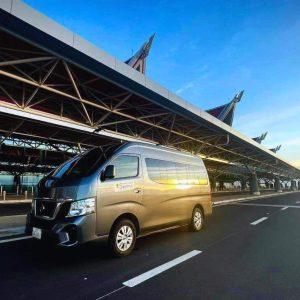
Shared SAI Siem Reap Airport Transfer – We depart every 1 hour!
From: 9$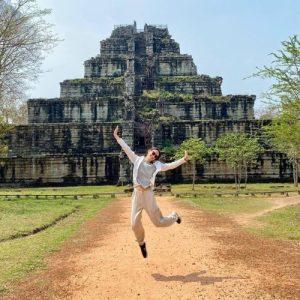
Private Full-Day Siem Reap to Koh Ker & Beng Mealea Temple Tour
From: 75$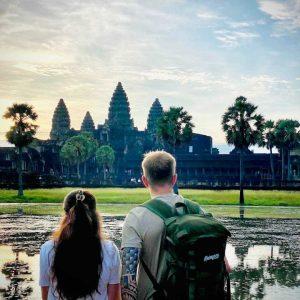
2-Day Angkor Wat Sunrise & Banteay Srei Grand Tour – Small Group Tours
From: 30$
2-Day Angkor Wat Temple Sunset and Floating Village Tour
From: 40$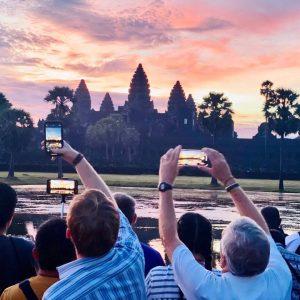
3-Day Angkor Wat Sunrise, Banteay Srei and Floating Villages Tour – Small Group Tours
From: 50$


